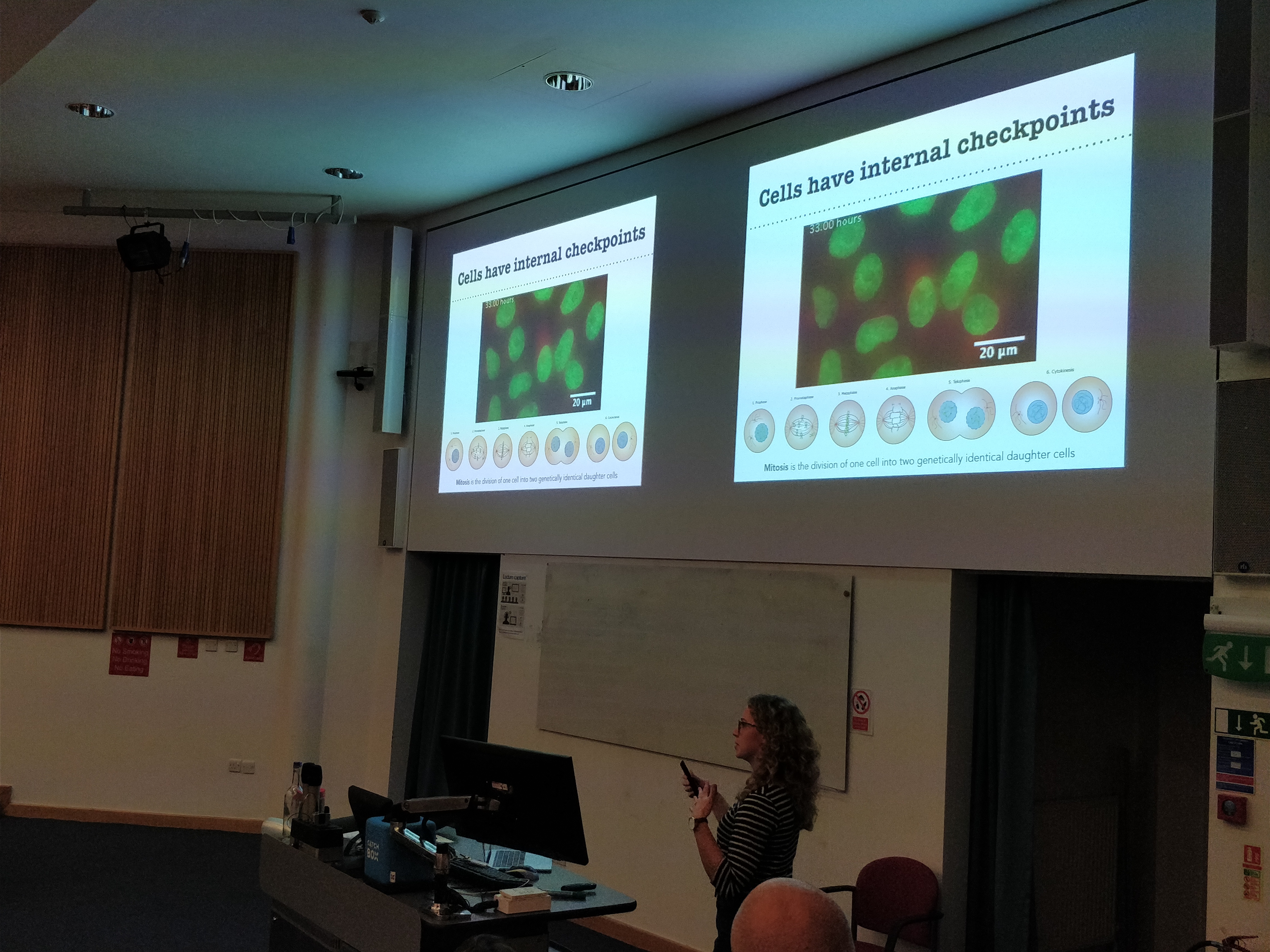Public science evening investigates 'bad cell service'
How do our cells protect us from cancer? How do pathogens survive inside us? What are gap junctions and why are they important? These are just a few of the fascinating questions discussed during a public science evening held at WMS this week.
Around 50 members of the public joined staff and students from the Quantitative Biomedicine Programme and the Division of Biomedical Sciences on 1 May to learn why and how cells communicate.
Following a welcome from the evening’s host Professor Andrew McAinsh, Head of the Division of Biomedical Sciences, attendees were given an overview on regulating cell migration by research fellow Gabrielle Larocque, followed by an introduction to how cells protect us from cancer by Cerys Currie, a PhD student in the School of Life Sciences.
Over the following hour attendees were given the chance to enjoy some refreshments and discuss some of the great research happening here with our students and academics, before having the opportunity to see inside our labs to look at some of the high-tech equipment used in our cell research.
The event ended with two more talks, with Professor Nick Dale from the School of Life Sciences explaining the importance of gap junctions, and Dr Meera Unnikrishnan discussing bacterial conversations in the gut.
Attendees were given the chance to ask questions before the event came to a close.
Thank you to everyone who came along to the evening and to all those who helped make it happen. Our next QBP public science event will take place in November, so keep an eye out for more information coming soon.









